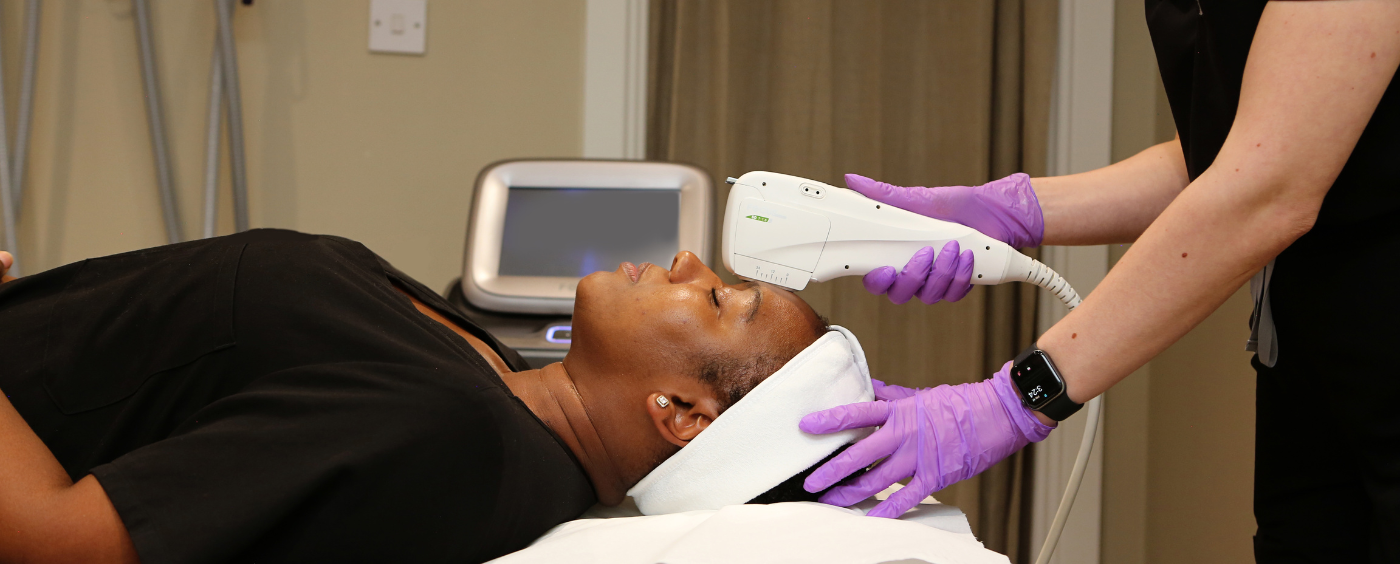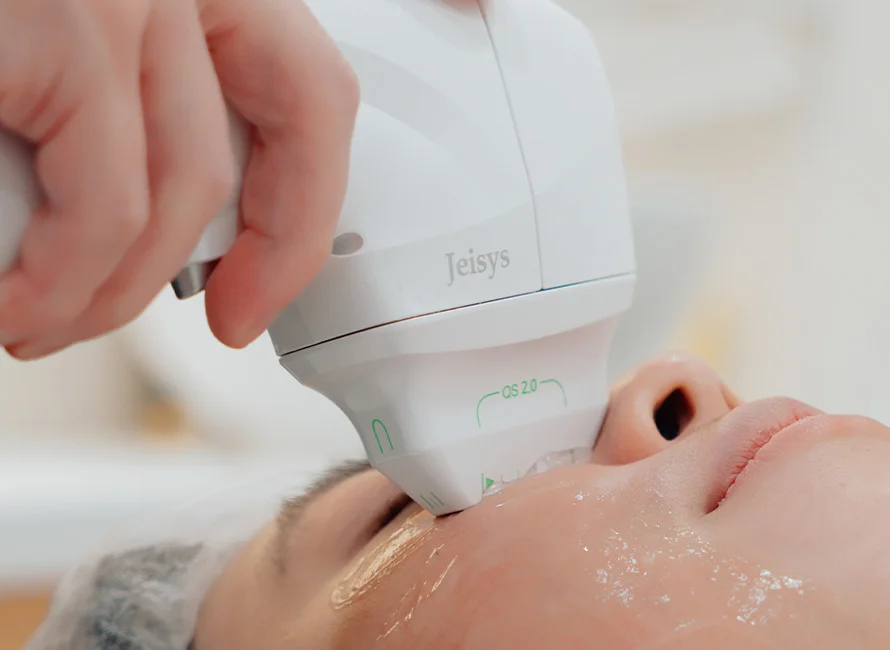HIFU Treatment: The Safe, Non-Invasive Course to Glowing Skin
High-Intensity Focused Ultrasound (HIFU) treatment has actually arised as an engaging option for those seeking non-invasive skin renewal. This cutting-edge technology utilizes ultrasound waves to boost collagen manufacturing, properly dealing with issues such as skin laxity and signs of aging. With its minimal downtime and tailored technique, HIFU accommodates a selection of people looking to improve their skin's look. The details of exactly how HIFU works and its viability for different skin kinds merit a closer exam, as comprehending these factors is critical for notified decision-making.
What Is HIFU Treatment?
High-Intensity Focused Ultrasound (HIFU) therapy has become an advanced non-invasive treatment developed to renew the skin and promote an extra youthful look. This innovative therapy harnesses the power of ultrasound innovation to stimulate collagen production and boost skin elasticity without the demand for surgical treatment. Thus, HIFU has gotten appeal among people looking for effective skin firm and lifting services.
HIFU therapy is specifically appealing due to its security account and marginal downtime. Unlike typical facelifts, which commonly call for extensive recovery periods and involve considerable dangers, HIFU uses a comfy choice that can be performed in a scientific setup. Individuals typically experience only mild discomfort during the procedure, and many can resume their everyday tasks promptly later.
The convenience of HIFU extends beyond visual improvement; it is additionally made use of in numerous clinical applications. Its primary focus remains in the realm of aesthetic dermatology, where it resolves worries such as drooping skin, fine lines, and wrinkles. As research study continues to progress, HIFU treatment is strengthening its area as a beneficial alternative for people seeking to accomplish radiant, younger skin without invasive techniques.

How HIFU Works
HIFU treatment operates by making use of focused ultrasound energy to penetrate the skin at different depths, exactly targeting the facial layers where collagen fibers reside. This advanced technique uses high-intensity concentrated ultrasound waves that create warmth within the targeted tissue, stimulating an all-natural healing response. As the ultrasound power is provided, it causes regulated thermal injury to the skin's deeper layers, prompting the body to launch a regenerative process.
The thermal result of HIFU activates collagen synthesis, which is vital for maintaining skin flexibility and firmness. With time, this causes the renovation of collagen fibers, boosting the overall framework and look of the skin. The therapy can be personalized to address certain areas of problem, such as sagging skin or penalty lines, making it an effective alternative for various skin kinds.
Unlike traditional medical methods, HIFU uses a non-invasive choice, dramatically reducing recuperation time and potential issues. Patients can normally go back to their everyday tasks instantly after the treatment. The accuracy of HIFU technology makes click here to read sure that bordering tissues stay unscathed, providing a risk-free and targeted strategy to skin rejuvenation.
Advantages of HIFU
The benefits of HIFU therapy expand beyond its innovative innovation, supplying a variety of benefits for those seeking skin restoration. Among the most notable benefits is its non-invasive nature, which gets rid of the demand for surgeries and comprehensive recuperation times. People can enjoy considerable skin firm and training results without the associated risks of conventional facelifts.

In addition, HIFU advertises collagen manufacturing, a vital protein that contributes to skin elasticity and firmness. As collagen levels increase, individuals commonly experience boosted skin appearance and a decrease in great lines and creases. This all-natural improvement brings about a vibrant look that More Bonuses can last for months, otherwise years.
Additionally, HIFU therapy is extremely adjustable, permitting professionals to customize the procedure to the certain requirements and worries of each individual. This tailored technique makes best use of outcomes, making sure that every individual gets ideal care.
What to Anticipate During Treatment
Throughout a HIFU therapy session, individuals can normally expect a period of 30 to 90 mins, depending on the location being targeted. HIFU. The procedure begins with a detailed examination, where the expert examines the skin and discusses the individual's goals. Hereafter, the skin is cleansed, and a topical anesthetic may be related to guarantee convenience during the therapy
As soon as the skin is prepared, an unique ultrasound gel is put on assist in the distribution of ultrasound power. The HIFU tool is then placed, and the expert thoroughly targets the fixed areas. Clients might experience an experience of warmth or moderate pain as the ultrasound power penetrates the skin, promoting collagen manufacturing.
Throughout the treatment, specialists constantly check the patient's comfort degrees, readjusting setups as necessary. Many sessions are well-tolerated, and any type of pain is typically short-term. Post-treatment, individuals might see mild redness or swelling in the treated areas, which typically subsides this contact form within a few hours. Results can slowly enhance over a number of months as collagen remains to create, leaving people with rejuvenated, glowing skin (HIFU).
Suitable Candidates for HIFU

Candidates should additionally have practical assumptions concerning outcomes; while HIFU can provide recognizable lifting and tightening, it is not a substitute for surgeries. People with specific clinical problems, such as severe skin infections or open injuries in the treatment location, may not be ideal for HIFU. Those with specific skin kinds or conditions, such as extreme acne or rosacea, must speak with a certified professional to identify if HIFU is ideal.
Furthermore, people who are expectant or have a history of extreme allergies to ultrasound therapy must avoid this treatment. Inevitably, a detailed assessment with a qualified expert is essential to examine personal health and wellness background and skin problem, ensuring that HIFU is a risk-free and reliable choice for attaining their aesthetic objectives.
Conclusion
Finally, HIFU therapy represents an encouraging non-invasive alternative for people seeking skin renewal. By using the power of ultrasound technology, this ingenious treatment effectively promotes collagen manufacturing, boosting skin elasticity and minimizing noticeable signs of aging. With minimal downtime and a tailored technique, HIFU supplies significant benefits for those with moderate to moderate skin laxity. This therapy not just cultivates a vibrant look yet also aligns with the expanding need for secure and effective cosmetic solutions.